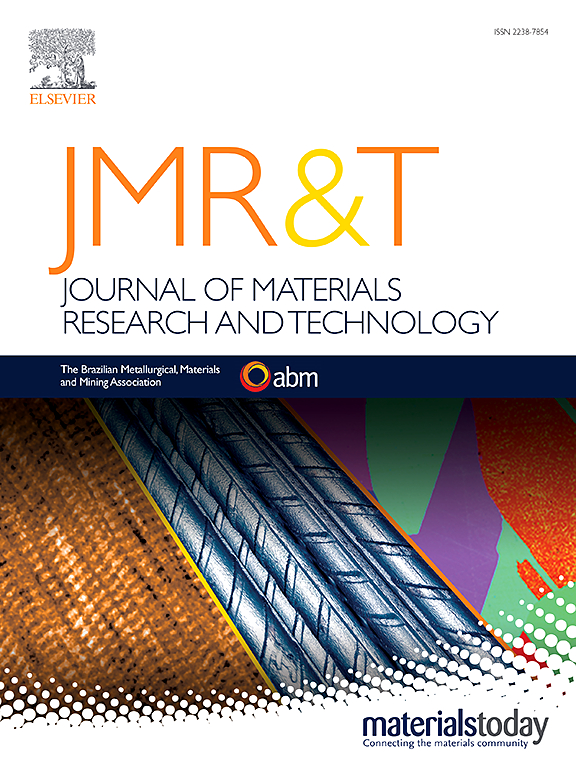Effect of impurity elements on the corrosion behavior of Mg-Al alloys: A first principles study
IF 6.2
2区 材料科学
Q1 MATERIALS SCIENCE, MULTIDISCIPLINARY
Journal of Materials Research and Technology-Jmr&t
Pub Date : 2025-05-01
DOI:10.1016/j.jmrt.2025.05.078
引用次数: 0
Abstract
Magnesium-aluminum (Mg-Al) alloys are promising lightweight materials but are prone to severe corrosion induced by trace impurities (Fe, Ni, Cu) even at ppm levels. This study systematically investigated the corrosion mechanisms of impurity-containing second phases in Mg-Al alloys using first-principles calculations. The work functions and surface energies of impurity-induced phases (Bcc(Al,Fe), Al13Fe4, Mg2Ni, Mg2Cu) and common phases (Mg17Al12, Al8Mn5, Al11Mn4) were calculated. Results reveal that all impurity phases exhibit higher average work functions (Φ) than α-Mg, acting as cathodic sites to drive micro-galvanic corrosion. The maximum work function hierarchy follows: Bcc(Al,Fe) > Al8Mn5 > Mg2Ni > Mg17Al12> Mg2Cu. Mn substitution in Fe-containing phases reduces their cathodic activity by lowering work function disparities. Notably, the corrosion effect of impurities may also be affected by the inversion of electrochemical nobility. This study establishes a direct correlation between electronic work function differences and corrosion susceptibility, providing atomic-scale insights for designing high-purity Mg-Al alloys through impurity control strategies.
杂质元素对Mg-Al合金腐蚀行为影响的第一性原理研究
镁铝(Mg-Al)合金是一种很有前途的轻质材料,但即使在ppm水平,也容易受到微量杂质(Fe, Ni, Cu)的严重腐蚀。本文采用第一性原理计算方法系统地研究了含杂质Mg-Al合金第二相的腐蚀机理。计算了杂质诱导相(Bcc(Al,Fe), Al13Fe4, Mg2Ni, Mg2Cu)和共相(Mg17Al12, Al8Mn5, Al11Mn4)的功函数和表面能。结果表明,各杂质相均表现出高于α-Mg的平均功函数(Φ),作为阴极位点驱动微电偶腐蚀。最大工作函数层次如下:Bcc(Al,Fe) >;Al8Mn5祝辞Mg2Ni祝辞Mg17Al12>Mg2Cu。含铁相中Mn的取代通过降低功函数差异降低了其阴极活性。值得注意的是,杂质的腐蚀效果也可能受到电化学贵族反转的影响。该研究建立了电子功函数差异与腐蚀敏感性之间的直接关联,为通过杂质控制策略设计高纯Mg-Al合金提供了原子尺度上的见解。
本文章由计算机程序翻译,如有差异,请以英文原文为准。
求助全文
约1分钟内获得全文
求助全文
来源期刊

Journal of Materials Research and Technology-Jmr&t
Materials Science-Metals and Alloys
CiteScore
8.80
自引率
9.40%
发文量
1877
审稿时长
35 days
期刊介绍:
The Journal of Materials Research and Technology is a publication of ABM - Brazilian Metallurgical, Materials and Mining Association - and publishes four issues per year also with a free version online (www.jmrt.com.br). The journal provides an international medium for the publication of theoretical and experimental studies related to Metallurgy, Materials and Minerals research and technology. Appropriate submissions to the Journal of Materials Research and Technology should include scientific and/or engineering factors which affect processes and products in the Metallurgy, Materials and Mining areas.
 求助内容:
求助内容: 应助结果提醒方式:
应助结果提醒方式:


